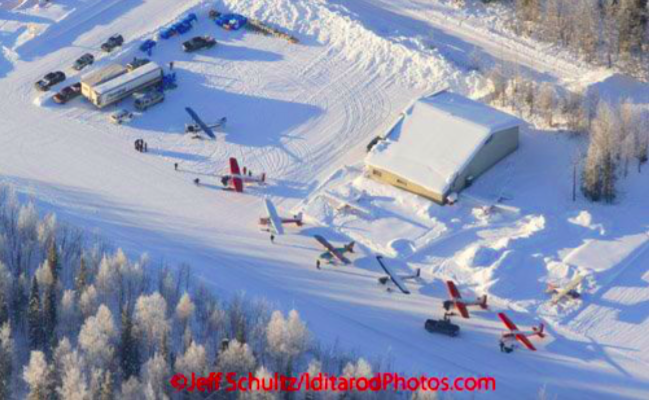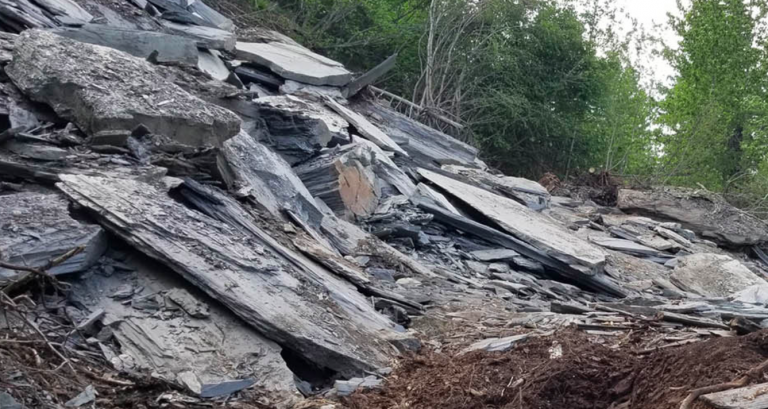By HAYDEN LUDWIG
CAPITAL RESEARCH CENTER
There’s no shortage of wealthy environmentalist groups angling to keep Alaska from making use of its natural resources, usually by exploiting fears of pollution from the proposed Pebble mine, a critical copper and gold mine that promises to restore America’s independence from foreign strategic minerals.
Take SalmonState, a supposedly home-grown nonprofit that claims Alaska’s “salmon habitat is under threat” from the construction of Pebble Mine and wants to shut it down. SalmonState runs its scare campaign through the website Save Bristol Bay, where it claims “Pebble mine threatens one of the world’s last great fisheries” while soliciting donations from concerned observers.
But SalmonState isn’t local, nor is it even a nonprofit—in fact, the group doesn’t hold board meetings or own so much as a pen.
That’s because SalmonState isn’t a real nonprofit—it’s a front for the left-wing New Venture Fund, a 501(c)(3) nonprofit in Washington, D.C. that functions as a Left-wing mega-funder. Donations to SalmonState in reality go to the New Venture Fund—something the group’s website fails to mention.
Together with its three “sister” nonprofits, the New Venture Fund forms a massive “dark money” network housed in the D.C. headquarters of Arabella Advisors, a for-profit philanthropy consulting firm created by ex-Clinton administration staffer Eric Kessler.
And Arabella’s empire is dark. Between 2013 and 2017, its four interlocking nonprofits brought in a staggering $1.6 billion—largely from untraceable donors and major foundations on the Left, including George Soros’s Open Society Foundations.
Arabella uses that cash to spawn hundreds of “pop-up” groups just like SalmonState—websites designed to look like fully-fledged nonprofits, when in fact they’re little more than a line-item on a budget. These groups in turn attack conservatives on every issue ranging from judicial nominations to abortion-on-demand to the environment—and they’re rarely identified as fronts for Arabella.
But Arabella also uses its “dark money” to finance special interests outside of Washington, D.C. Case-in-point: the Alaska Center, an eco-activist group which wants you to know that “Alaskans deserve a fair process” when it comes to Pebble, “not one hijacked by D.C. lobbyists and foreign companies.”
That’s rich coming from a group whose top donors include some of the Left’s biggest and darkest funders.
By its own admission, the Alaska Center’s top three donors are the Sixteen Thirty Fund (Arabella’s lobbying shop), the Tides Advocacy Fund, and the League of Conservation Voters—all D.C.-based “dark money” advocacy groups that fund the activist groups behind the eco-Left’s increasingly radical agenda at the expense of the everyday Americans who benefit from cheap energy and abundant minerals.
Altogether, these three mega-funders spent nearly $70 million in 2016, according to their latest IRS filings.
The Alaska Center used its “dark money” to pay for a whopping 158 Facebook ads between July 2018 and March 2019. Many of those ads urged users to oppose the Pebble project and vote for left-wing candidates in the state legislature and in municipal districts.
The Alaska Center also supports an economy-killing carbon tax along the lines of the Canadian carbon tax passed last summer, which is expected to burden families with as much as $1,120 in added annual energy costs in certain parts of the country—the kinds of extremist policies favored by the Alaska Center’s biggest donors in Washington, D.C.
The Tides Advocacy Fund often goes by “The Advocacy Fund,” a name it adopted in 2010 perhaps in order to distance itself from its infamous “sister” group. That’s because Tides Advocacy is the lobbying arm of the Tides Foundation, a well-connected mega-funder that uses grants from numerous major foundations to incubate dozens of left-wing activist groups.
It’s massive, too. Altogether, Tides’ nonprofit network spent a staggering $3.1 billion between 2007 and 2017, much of which went to lobbying work.
Yet the Tides Advocacy Fund’s activism pales in comparison to the League of Conservation Voters, an environmental funder that’s been called a “’dark money’ heavyweight” by the left-leaning Center for Public Integrity—despite endorsing and donating nearly $140,000 to the 2018 reelection campaign of Rhode Island Sen. Sheldon Whitehouse, the Democrat whose biggest bugbear is so-called “dark money.”
The LCV is a perpetual enemy of oil and natural gas drilling. When Congress voted to lift the 40-year ban on oil exports in 2016, the group railed against the “radical leadership” of the Republican House majority, accusing them of being “more concerned with lining the pockets of Big Oil than standing up for American families.”
The LCV had no problem endorsing Rep. Alexandria Ocasio-Cortez’s destructive Green New Deal in February—the resolution which the far-left Green Party estimates could cost between $700 billion and $1 trillion annually.
But the Alaska Center has one thing right: Alaskans do deserve a fair political process, one untainted by professional activists and their special interest friends in Washington, D.C.
And they’ll get one—by ignoring SalmonState, the Alaska Center, and its leftist funders.
Hayden Ludwig is an Investigative Researcher at Capital Research Center. He is a native of Orange County, California, and a graduate of Sonoma State University.
Editor’s note: Save Bristol Bay is a joint campaign of Trout Unlimited and SalmonState which financially benefits Trout Unlimited.











